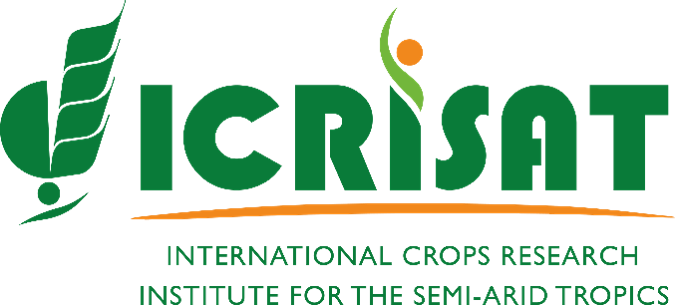Location
The International Crops Research Institute for the Semi-Arid Tropics (ICRISAT) is an international non-profit organization that undertakes scientific research for development.
Our approach is through partnerships and with an Inclusive Market Oriented Development.
Partnerships are critical as ICRISAT takes a catalyst role to help rural communities develop their own solutions and engage
the actors needed to bring the vision to reality.
Inclusive means we are inclusive of the farmers in developing solutions and inclusive of the all people especially women and youth.
Market Oriented Development means we focus our research and development efforts on making farming profitable,
helping move farmers from subsistence to commercial operators.
Members:
Resources
Displaying 46 - 50 of 75Technical and institutional attributes constraining the performance of small-scale irrigation in Ethiopia.
Small-scale irrigation is playing an important role in adapting to climate change, achieving food security, and improving household incomes. The Ethiopian Government considers irrigated agriculture as a primary engine of economic growth and plans to increase the current level of irrigation infrastructure three-fold by the end of 2015. However, there has been concern regarding the performance and management of existing small-scale irrigation.
Quantifying Production Losses due to Drought and Submergence of Rainfed Rice at the households level Using Remotely Sensed MODIS data.
Combining remotely sensed Moderate Resolution Imaging Spectroradiometer (MODIS) data with Bangladesh Household Income and Expenditure Survey (HIES) data, this study estimates losses in rainfed rice production at the household level. In particular, we estimated the rice areas affected by drought and submergence from remotely sensed MODIS data and rice production from Household Income and Expenditure Survey (HIES) data for 2000, 2005 and 2010. Applying two limit Tobit estimation method, this study demonstrated that both drought and submergence significantly affected rice production.
Managing Rainwater and Small Reservoirs in Sub-Saharan Africa
Annual water, sediment, nutrient and organic carbon fluxes in river basins: a global meta-analysis as a function of scale
Process controls on water, sediment, nutrient, and organic carbon exports from the landscape through runoff are not fully understood. This paper provides analyses from 446 sites worldwide to evaluate the impact of environmental factors (MAP and MAT: mean annual precipitation and temperature; CLAY and BD: soil clay content and bulk density; S: slope gradient; LU: land use) on annual exports (RC: runoff coefficients; SL: sediment loads; TOCL: organic carbon losses; TNL: nitrogen losses; TPL: phosphorus losses) from different spatial scales.
Participatory analysis of vulnerability to drought in three agro-pastoral communities in the West African Sahel
Drought is one of the major climatic hazards impacting on the various sectors including crop and livestock in the West African Sahel. Pastoral and agro-pastoral communities in the region are regularly affected by drought, with vulnerability differing with gender, age, wealth status (access to cropland and livestock endowment), geographic location, social networks, and previous exposure to drought. Effective interventions require regular monitoring of vulnerability to drought, for which various quantitative and qualitative approaches exist.



